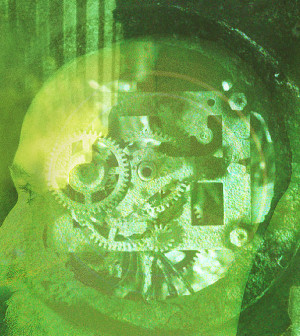- How Daily Prunes Can Influence Cholesterol and Inflammation
- When to Take B12 for Better Absorption and Energy
- Epsom Salts: Health Benefits and Uses
- See What Saffron Can Do for Sleep and Heart Health
- 6 Common Mistakes to Avoid Before Your Physical
- Can Sweating Really Help You Beat a Cold?
- Strengthening Your Relationship: Practical Strategies
- Skip Storing This Everyday Product in the Fridge Door
- Green Tea + B3 Pairing May Boost Brain Health
- Navigating Your Midlife Crisis: Embracing New Possibilities
Magnetic Brain Stimulation Shows Promise Against Eating Disorders


TUESDAY, Nov. 12New research suggests that some patients with anorexia or bulimia who receive targeted, noninvasive magnetic brain stimulation may experience relief from their binge eating and purging behaviors.
Doctors used a procedure called “repetitive transcranial magnetic stimulation” on 20 patients with entrenched cases of anorexia or bulimia. The treatment prompted measurable symptom improvement among half of those in the group, and the finding raises hopes for an alternative way to battle tough-to-treat eating disorders.
“The upshot is that between 50 and 60 percent of the time you’re getting at least a 50 percent reduction in bingeing behavior,” said study author Dr. Jonathan Downar, a clinician scientist in the department of psychiatry at the University Health Network in Toronto. “And this is among patients who had already tried everything for their eating disorder, and nothing had worked. So, what we’re talking about is completely unprecedented.”
Downar was to present his team’s findings Tuesday at the Society for Neuroscience annual meeting, in San Diego. Research presented at medical meetings should be viewed as preliminary until published in a peer-reviewed journal.
About 8 million North Americans suffer from chronic eating disorders such as bulimia and anorexia, the researchers noted. While prescription drugs and behavioral therapy help some people, they do not help everyone.
The notion that brain stimulation might work for these patients came about almost by accident, Downar said, after the treatment helped patients who struggled with depression.
It was a 2011 case study in particular that pointed the way, after a patient diagnosed with both depression and bulimia experienced almost complete relief from both conditions after just two weeks of brain stimulation.
In this latest study, 20 patients suffering from anorexia or bulimia received 45-minute sessions of brain stimulation, given 20 times over a four- to six-week period (at a cost of roughly $6,000). The stimulation was directed toward the region of the brain considered critical in the execution of self-control with respect to thoughts, emotions and behavior.
The result: enhanced activity in the targeted regions resulted in a 50 percent drop in binge eating and purging behaviors among nearly half the patients; another third saw their problems dip by at least 80 percent, and in some cases the behaviors disappeared altogether.
Brain scans indicated that those who responded to the treatment may have distinctly different brain-activity patterns than those who didn’t.
“Those who did well with [brain stimulation] showed a lack of connection — of physiological circuitry — between the part of the brain that is supposed to tamp down on urges and cravings and the regulation area,” Downar noted. “So stimulating that area repeatedly helped make the missing connection,” he explained.
“But nonresponders seemed to actually have more connections to the regulatory circuitry than average. So [brain stimulation] did nothing for them because a need for more stimulation is not their problem,” he added.
“But we think that maybe if we change the stimulation target for these patients, and change it to inhibit rather than excite stimulation, we might ultimately be able to help even these patients,” Downar suggested. “We think it’s possible.”
Dr. Doug Klamp, a specialist in eating disorders with a private practice in Scranton, Pa., said the approach “seems promising.”
“Bulimia can be a very difficult problem,” Klamp explained. “When patients come to me, 60 to 70 percent will be cured within a year or so. But those other 30 to 40 percent are tough. They can try all the standard antidepressants and antipsychotic medications, and all the behavioral therapy options, but their problem behavior may still go on. For decades,” he added.
“So, a new therapy would be very helpful,” Klamp said. “And this idea makes sense to me, because I tend to see the same impulsive and destructive behavioral characteristics over and over again in my patients, as if it’s hard-wired into people — hard-wiring that maybe, with this, we can change.”
Suzanne Mazzeo, a professor of psychology at Virginia Commonwealth University in Richmond, cautioned that it’s still unclear why brain stimulation seems to help some — but not all — patients.
“Certainly, we do need more approaches. Eating disorders are very difficult problems to treat because our food environment is stacked against us, with food manufactured to be highly palatable and hard to resist,” Mazzeo pointed out.
“So, overcoming any kind of emotional eating issue is going to be hard,” she added. “And what we currently have for treatment is certainly not working for everyone.”
But, Mazzeo noted, “in addition to ensuring the safety of this new technique and testing it for long-term maintenance, we have to be sure why it works for some and not others, so we can know who would be the most appropriate candidates for it.”
More information
For more on eating disorders, visit the U.S. National Library of Medicine.
Source: HealthDay
Copyright © 2026 HealthDay. All rights reserved.










